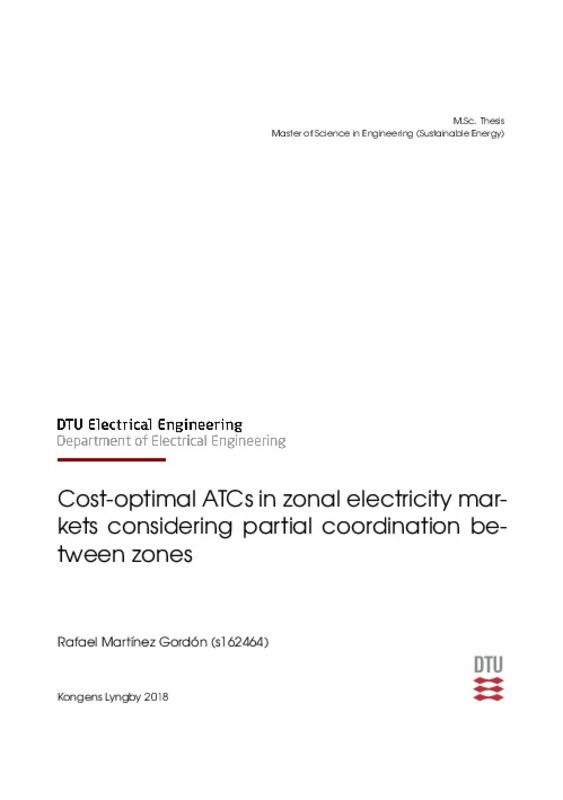|
Resumen:
|
[ES] Over the last years, the penetration of non-dispatchable variable renewable energy
is constantly increasing, bringing new sources of uncertainty and challenging the
traditional electricity market designs. To properly ...[+]
[ES] Over the last years, the penetration of non-dispatchable variable renewable energy
is constantly increasing, bringing new sources of uncertainty and challenging the
traditional electricity market designs. To properly integrate these energy sources is
currently a main research topic, specially in zonal electricity markets, in which market
prices are constant across each zone without spatial differentiation.
This thesis addresses this problem exploring new methods to determine the Available
Transfer Capacities (ATCs), which limit the trade of power between zones in the day
ahead stage. The methodology used, extensively analyzed in the previous literature,
defines ATCs aiming to minimize the operational costs and decoupling them from the
physical grid, unlike the current methods in which ATCs are determined according
to security and reliability constraints. To define this set of optimal ATCs, a external
entity gathers all the necessary information of the different zones of the zonal network
and solves a bilevel stochastic optimization problem.
The aim of this thesis is to use the previous models of the literature as a benchmark,
analyze and extend them in order to align them with the current practice. Two main
contributions are listed in this master thesis work: (i), previous work determine the
cost-optimal ATCs minimizing the total expected operating cost, here the analysis is
extended not only to the total costs, but also to the costs of each one of the zones
of the zonal network. (ii), the model is reformulated and solved in a distributed
fashion, using a distributed optimization technique, in order to avoid an excessive
share of information and respect the privacy of the entities involved. The resulting
algorithm is applied to different case studies, in order to compare and analyze the
results of both approaches, i.e the centralized one, with full share of information to
the central entity (named the full coordination model) and the distributed approach,
named partial coordination model.
[-]
[EN] Over the last years, the penetration of non-dispatchable variable renewable energy
is constantly increasing, bringing new sources of uncertainty and challenging the
traditional electricity market designs. To properly ...[+]
[EN] Over the last years, the penetration of non-dispatchable variable renewable energy
is constantly increasing, bringing new sources of uncertainty and challenging the
traditional electricity market designs. To properly integrate these energy sources is
currently a main research topic, specially in zonal electricity markets, in which market
prices are constant across each zone without spatial differentiation.
This thesis addresses this problem exploring new methods to determine the Available
Transfer Capacities (ATCs), which limit the trade of power between zones in the day
ahead stage. The methodology used, extensively analyzed in the previous literature,
defines ATCs aiming to minimize the operational costs and decoupling them from the
physical grid, unlike the current methods in which ATCs are determined according
to security and reliability constraints. To define this set of optimal ATCs, a external
entity gathers all the necessary information of the different zones of the zonal network
and solves a bilevel stochastic optimization problem.
The aim of this thesis is to use the previous models of the literature as a benchmark,
analyze and extend them in order to align them with the current practice. Two main
contributions are listed in this master thesis work: (i), previous work determine the
cost-optimal ATCs minimizing the total expected operating cost, here the analysis is
extended not only to the total costs, but also to the costs of each one of the zones
of the zonal network. (ii), the model is reformulated and solved in a distributed
fashion, using a distributed optimization technique, in order to avoid an excessive
share of information and respect the privacy of the entities involved. The resulting
algorithm is applied to different case studies, in order to compare and analyze the
results of both approaches, i.e the centralized one, with full share of information to
the central entity (named the full coordination model) and the distributed approach,
named partial coordination model.
[-]
|







